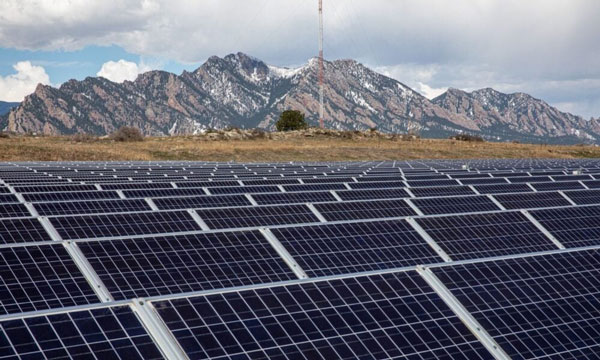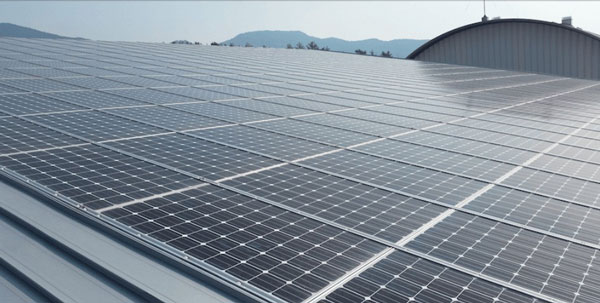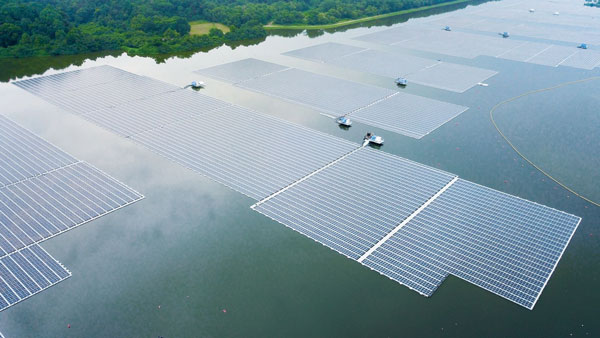Reducing Air Pollution and Emissions
Solar power has already had a major positive impact on the environment, most notably in the mitigation of air pollution and emission reductions. Solar panels generate power without burning fossil fuels, they do not emit hazardous pollutants like sulfur dioxide (SO2) and particulate matter (PM) that cause smog and respiratory illnesses.
The disruption of California's Million Solar Roofs Initiative California Million Solar Roofs Initiative has led to over a million solar installations since 2006 The program is credited with reducing greenhouse gas emissions by over 34,000 metric tons of nitrogen oxides (NOx) and 28,000 metric tons of sulfur dioxide (SO2) each year - both common pollutants that contribute to smog formation. The state's embrace of solar power has helped not only to clean the air, but to displace reliance on the type of non-renewable plants that are some of the biggest emitters of greenhouse gases.
Germany Cuts Carbon Footprintgermany is a world leader consumer of solar, grade european credit that about 40 gigawatts of solar grade electric generating capacity solar materials is installed there. This brings the total carbon emissions avoided to around 35 million tons of CO2 each year, with no end in sight as electricity from wind and solar grows and coal consumption shrinks. The numbers illustrate the importance of solar in allowing Germany to progress further with its Energiewende, or energy transition, and are a major driver of the country's plans to slash its carbon emissions by 40% year-on-year by 2025.
The solar switch should reduce air pollution, which in turn could improve public health - and lower healthcare costs - translating into economic benefits as well. The solar industry has created more than 250,000 jobs in the U.S. alone, demonstrating that environmental acts can also fuel economic growth.
India is constructing large solar farms like the 14,000 acre Bhadla Solar Park in Rajasthan which produces 2245 MW of electricity. That single plant saves the annual emission of about 4 million tons of CO 2, which is the equivalent of taking about 800,000 cars off the roads.

Conserving Resources and Biodiversity
Solar power abates emissions and also helps in preserving biodiversity and natural resources as well. Conventional processes for power generation like coal-power, natural gas-power, etc. uses a lot of water and modify land under its use; leading to habitat destruction and displacement of species.
Water Conservation Impact Solar photovolatic (PV) cells produce electricity from sunlight, without any water using an important advantage in the water-averse states. The Mojave solar projects where they use very little water (v a coal fired power plant that needs 600-800 gallons per megawatt-hour of cooling). In such instances, through the use of solar power, it helps to save on water resources, which is merely a lifeline for the ecosystem and the people that are relying on it.
Conserves land and habitat Solar farms can be sited on degraded lands that are unfit for agriculture or forestry, saving more fertile lands for wildlife and vegetation. In the UK, the Westmill Solar Cooperative grazes sheep on the land the solar park occupies, showing how solar farms can coexist with farming and help to support native flora and fauna.
Solar Energy and Social Message Made to be Something More Reducing dependence Mining and Environmental Extraction Mining offers a particular issue, when coal, oil, and gas are mined they are exhausted. Although mining materials can still lead to an impact, it is far less severe than what is currently happening with the extraction of fuels. Silicon mining, has not so extended range impacts, is flanked by at most inflammatory substances, plus therefore little overall environmental degradation.
Case Study: Topaz Solar Farm The Topaz Solar Farm in California is one of the largest solar plants in the world and has established a few comprehensive methods to protect native wildlife around its facility, including special fencing to prevent animal entrapment and corridors to maintain safe animal movement.
Lowering Water Use in Energy Production
Solar power saves an immense volume of water for energy production, making a clean alternative to water-intensive conventional power sources. Unlike traditional thermal power plants, Which use steam generation in order to generate electricity, PV systems utilize very little water for electricity production.
Comparison to Conventional Energy
A typical nuclear or coal power plant requires about 400-600 gallons of water to be withdrawn and consumed for each megawatt-hour of electricity made. Solar photovoltaic, on the other hand, is a zero-water tech when it comes to electricity generation with possibly some nominal amounts of water used mainly for cleaning the panels once in a blue moon to keep them at peak efficiency. This is in fact an enormous decrease in water, to save water resources to be exploited somewhere essentially needed.
Contribution in Dry Areas
This benefit is especially in dry areas. In Arizona, solar plants have been critical for water conservation as well as for meeting energy needs. The Agua Caliente Solar Project produces 290 megawatts of power and no source of water whatsoever in operation, so there is a great model for energy generation in a water stressed area.
Innovative Solutions in Solar Operations
Some solar plants have even reduced their water use more by actually using dry-cooling systems. The more megawatts the system requires, the more water needs to be used to cool the heaters that produce all that steamThe Ivanpah Solar Electric Generating System in Nevada, which produces electricity similar to how boardwalk meat trucks make falafel, uses air instead of water to cool its turbines and thus reduces its water consumption about 90% from the conventional cooling process. The innovation saves water and can serve as a model to revolutionize renewable energy technologies.
Economic and Environmental Gains Saving water leads not only to resource preservation but also reduces operational costs and consequently minimizes environmental impact. It is a transition that is becoming more urgent as many parts of the world grapple with water scarcity forces, turning solar water efficiency of energy into an essential precondition for the acceleration of solar.

Mitigating Urban Heat Effects
As well as being a clean source of energy, solar also helps keep cities cool. Urban areas especially suffer the heat island effect - a phenomenon which sees cities experiencing dangerously hotter temperatures than their surroundings, made worse in part by the generation of heat from traditional energy sources during production. PV solar panels can absorb sun energy and transform it into electric energy, thus reducing air temperature locally.
Cooling Urban Areas (Solar Panels Installing List) Several studies have shown that areas that have higher numbers of solar panels tend to have lower surface temperatures as well as lower air temperatures. A New York City study showed that neighborhoods with many rooftop solar installations experienced summer peak temperatures 1 to 2°F cooler than areas with none. These results demonstrate that photovoltaics has a substantial capacity to mitigate the urban heat island effect, and further they suggest that replacing heat-generating infrastructure with photovolatic installations that contribute less to local warming much more widespread benefits beyond just the reduction of greenhouse gas emissions.
By Lian Yanqing (China Sustainability Tribune) Residential buildings in Singapore have been equipped with solar panels of a capacity even more than their own electricity consumption, thereby lowering the temperature of Singapore. Solar panels on the rooftops of residential and commercial buildings are helping address generation, while the physics of sitting on those densely built-up environments have their cooling effects too. These installations helped to lower the demand on air conditioning, one of the largest aspects to urban greenhouse gas-causing heat, causing a cooling effect in the rise of temperature in our cities.
Solarized Pavements & Carports: A new age of urban cool takes solar technology and transforms reflective pavements into solar parking canopies. These structures help in reducing the ambient temperature because of the high reflection of sunlight that is able to maintain less heat into their body compared to traditional materials. The deployment of solar canopies in parking lots in Los Angeles has been proven to reduce temperatures at ground-level as well as a means of generating power.
Economic and Environmental SynergeticMigration to solar power in urban areas would not only address the problem of urban heat but would also provide significant economic benefits in terms of energy reduction and a better urban life. This shows that urban planning and renewable energy policies can be harmonized to develop cities that are sustainable and liveable.
Promoting Circular Economy in Solar Production
The solar industry is adopting many of the principles of the circular economy: waste reduction, recycling of materials, and increasing the service life of products. Resource efficiency is the foundation of a sustainable process, which it is essential to support for sustainability reasons.
Recycling and Reuse of Solar PanelsSolar panel recycling is an important part in order to make the solar industry circular. This is exemplified in regulation in Europe where 85% of it by material content needs to be recycled (solar panels). First Solar's leadership also recently announced a recycling program that retrieves up to 90% of the materials in their panels (recycling valuable metals like silver and silicon). These materials can be recycled and then used in the production of new solar cells, thereby conserving resources and reducing energy inputs and environmental-impacts. (emphasis added)
More Resistant Solar Panels Another reason that the cost of solar panels has dropped so significantly has been gradually innovations in the technology the panels use, and one of these technology advancements has been in the lifecycle of solar panels. The warranties of modern solar panels have guaranteed at least 80% electricity production remaining at the end of the 25-year period. This also makes the panel less likely to be replaced in this life cycle, which inherently supports a green energy approach ( less waste)
Example: Silicon Recycling in the USAn interesting example of the implementation of the principles of the circular economy in the solar industry is the project in California, where a plant was created to recycle silicon from outdated solar modules. That silicon can be recycled, purified, and then be used again in new panels. The chip manufacturing process not only saves raw silicon, but also offers substantial reductions in terms of the environmental impact of silicon mining.
The Economic Upsides of a Circular Economy The move to a circular solar economy is not just good for the environment, it can also slash the expense of the raw materials used to make solar cells and the cost of managing waste. The economy of scale can be utilized to deliver solar power lower than the price of grid-based electricity, enabling solar to compete on a level playing ground.





